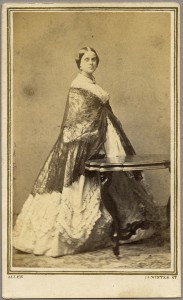
61 Bowdoin Street, Boston, Tuesday, 12 December 1865: On Wednesday, Nov. 30, 1864, we laid our dear brother John[3] in the quiet church yard at St. James the less.[4] He died on Sunday the 27th. Just one year from that sad day, the darling of all our hearts, my sister Lizzie, lay at the last gasp apparently – and though she rallied for a few days of inexpressible comfort to us all, she too left us on Friday Dec 1st and was laid by his side, on just such a soft Indian summer [day] as we had for him, on Monday, Dec. 4th, 1865. She was so wasted and altered that I can not realize yet, that it was our bright cheery Lizzie we left there.
It was Suffering & Death we laid in the cold dark tomb, not our darling; even the profile was unnatural, all the sweet smiling lines, drawn & rigid – and the plain hair, parted back like a child’s, and cut short, for its length & weight distressed her so, looked so unlike the rich full puffs, every wave of which caught such a rich golden auburn glow, upon its lovely chestnut brown. Continue reading ‘Aching hearts’






